What's New
Displaying results 2511 - 2520 of 4052
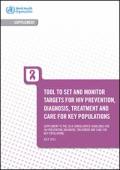
Resource | Tools,
This document provides guidance on monitoring and evaluating the implementation of the comprehensive package of interventions to address HIV among key populations: men who have sex with men, people in prisons and other closed settings, people who inject drugs, sex workers and transgender people.
The framework presented here is designed to help plan and assess progress at the macro level, in particular for national and subnational programming. This planning and assessment process should involve government agencies, nongovernmental organizations (NGOs), communities and service providers involved in developing, implementing, monitoring and evaluating HIV prevention, treatment and care programmes for these key populations. This framework builds on a similar existing framework specific to programmes for people who inject drugs: WHO, UNODC, UNAIDS technical guide for countries to set targets for universal access to HIV prevention, treatment and care for injecting drug users.
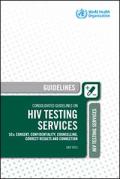
Resource | Guidelines,
The Consolidated guidelines on HIV testing services bring together existing guidance relevant to the provision of HIV testing services (HTS) and addresses issues and elements for effective delivery of HTS that are common in a variety of settings, contexts and diverse populations.
In addition, this document provides a new recommendation to support HTS by trained lay providers, considers the potential of HIV self-testing to increase access to and coverage of HIV testing, and outlines focused and strategic approaches to HTS that are needed to support the new UN 90 –90 –90 global HIV targets – the first target being diagnosis of 90% of people with HIV. Moreover, this guidance will assist national programme managers and service providers, including those from community-based programmes, in planning for and implementing HTS.
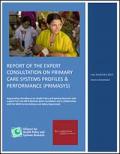
Resource | Publications,
In 2015 the Alliance received funding from the Bill and Melinda Gates Foundation to lead a programme of work on Primary Care Systems Profiles & Performance (PRIMASYS) in collaboration with the WHO Department for Service Delivery and Safety. This programme aims to bridge the knowledge gap on frontline healthcare delivery systems at national and subnational levels.
Twenty case studies on primary care systems will be developed across select low- and middle-income countries between 2015-2018. Countries will receive a small grant to develop the case study and will benefit from the technical and scientific support of the Alliance to collect and report data and information pertaining to primary care services, structures and processes.
The country case studies developed will be used to draw cross-cutting lessons to inform the performance of primary care systems.

Resource | Publications,
The Abstract Mentor Programme provides an opportunity for early-career abstract submitters to receive feedback from experienced abstract submitters on their draft abstracts. The programme links participants to mentors within the same track to maximize the use of the mentors’ expertise. Mentoring support was complemented by an online e-course on conference abstract writing.
This year, 80 mentors reviewed 156 draft abstracts for 124 researchers, offering them an opportunity to improve their submissions. 116 mentees finally submitted an abstract for IAS 2015.
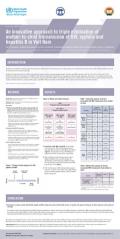
Resource | Data Sheets,
Viet Nam has committed to working towards the elimination of HIV mother-to-child transmission. The stated goals are to reduce the vertical transmission rate of HIV nationally to less than 5% by 2015 and to less than 2% by 2020.
This study aims at demonstrating an innovative model of combined universal screening for HIV, syphilis, and HBV for PW and treatment of infected PW in ANC to prevent vertical transmission of three infections.
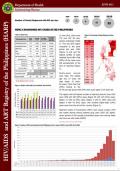
Resource | Fact Sheets,
In June 2015, there were 772 new HIV Ab seropositive individuals (Table 1). This was 56% higher compared to the same period last year (494) [Figure 1] and was the highest number of cases reported since 1984. Most (96%) of the cases were still asymptomatic at the time of reporting (Figure 3).
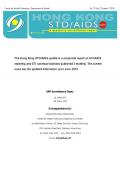
Resource | Publications,
The Hong Kong STD/AIDS update is a composite report on HIV/AIDS reporting and STI caseload statistics published 3 monthly. The current issue has the updated information up to June 2015.
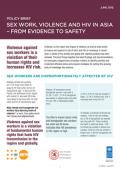
Resource | Publications,
Evidence, on the nature and impact of violence, as well as what works to reduce and respond to risk of harm and HIV, is increasing. In recent years, a series of key studies and global and regional guidance has been released. This brief brings together the latest findings and recommendations for advocates, programmers and policy-makers, to identify priorities and implement effective policy and program strategies for putting this growing body of knowledge into practice.
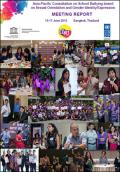
Resource | Publications,
Schools and governments throughout Asia-Pacific are moving beyond the idea that dealing with issues around sexual orientation and gender identity/expression (SOGI/E) is "too sensitive" or "too new". A recent regional consultation on the basis of SOGI/E reflected the sentiment of one Ministry of Education official from the region who told UNESCO: "It will always be sensitive or new if we never do anything about it."
Ministries and concerned stakeholders throughout the region are taking action and their successes as well as the challenges that lie ahead were discussed at the Asia-Pacific Consultation on School Bullying on the Basis of Sexual Orientation and Gender Identity/Expression held from 15-17 June 2015 in Bangkok.
A detailed, illustrated 49-page report on the results of the consultation with summaries of all sessions, key recommendations and suggested next steps by countries.
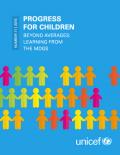
Resource | Publications,
A child’s chance to survive and thrive is much greater in 2015 than it was when the global community committed to the MDGs in 2000. Data show significant progress in areas such as child survival, nutrition, motherto-child transmission of HIV and primary school enrolment, among others. These are impressive achievements, but they are only part of the story.
This report also shows progress for the most vulnerable, proving that a more equitable world is within reach. But despite this progress, millions of the children in greatest need have been left behind – the most marginalized and vulnerable children whose future the MDGs were designed to safeguard.





